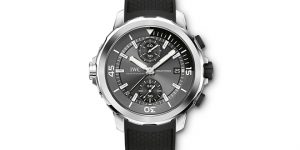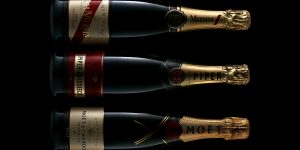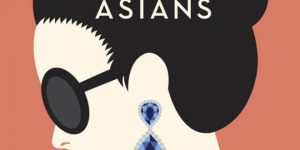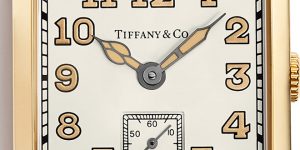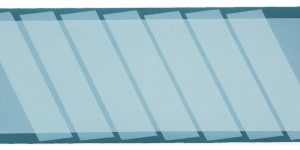Chok Yue Zan Divulges The Memories of His Childhood’s Lost Paradise
Chok Yue Zan is a renowned emerging force in the contemporary art world, who believes that one’s memories of the past can have a very tangible effect on the future.

As winner of the prestigious 2017 UOB Painting of the year in Malaysia, young Kuala Lumpur based artist Chok Yue Zan is a renowned emerging force in the contemporary art world. Born in Tawau, Sabah, Zan grew up with his grandparents, in a forested environment surrounded by lush greenery and breathtaking sceneries. It was his sanctuary, a space of unbridled happiness which he considers his lost paradise. Heavily inspired by nostalgia and the singular theme of past, present, and future – Zan believes that one’s memories of the past can have a very tangible effect on one’s future.
Chok Yue Zan Divulges The Memories of His Childhood’s Lost Paradise

Memory Of The Ocean III Acrylic and oil on canvas, 95(H)x180(W)cm, 2018
You were born in Sabah, East Malaysia. How influential has Sabah and its lush forests been in your art?
Sabah, Borneo is a beautiful place surrounded with lush forest and ocean. Unlike other kids, I am very lucky to grow up with my grandparents who were living in a beautiful paradise (forest). There are clean rivers where I can see all the fish dancing in the water, duck and geese singing for the fish, chicken and dogs chasing each other, cats sleeping all the time. This is all about my childhood happiness and joyful moments. I think my mum made the right decision for my childhood.
The themes you have chosen over the past years are often been related to Paradise, or a “Lost Paradise”. Tell us more about this Paradise which is so vividly present in your art?
Forest (paradise) means a lot to me. I remember the first time I was here in Kuala Lumpur, I easily get lost while in the big city. But I never get lost in the paradise. Trees and river always lead me to the correct direction. The paradise is a space; at the same time it is a guardian. I wish I could spend a long year in the paradise right now. Always good memories of living with my grandparents. They taught me how to collect eggs in the right way and fruit picking in the garden.
Following the passing of my grandparents in 2006, the paradise that I hold dear to my heart started to disappear. Everything turned into a sweet dream. All the life and space are gone. After a few years, my parents divorced. The relationship between me and my family is changing, and everything becomes strange. Paradise is not only a space, at the same time, it is everything for me.

Memory Of The Ocean Acrylic and charcoal on canvas, 115(H)x210(W)cm (Triptych), 2018
The concept of “Memory” is central to your art. How does it influence your vision of the future?
My last solo exhibition “Retrospect of Paradiso” 2018 at Art Porters Gallery is a recollection of my childhood memory. In this exhibition, I pay homage to my family ties and the environment I lived in. It is a narrative about the connection between me and the paradise, and relationship with family.
Recently I’ve been working on a new series called “De Upside Down”. This is a series that contemplates the imbalanced world and personal memories. The world we live in is transient. Nothing is permanent. Things change rapidly in a short time and the sceneries we used to know become unfamiliar. Can we trust our memories? With this series, I want to emphasise the connection between memories and unfamiliarity, using natural landscapes as an analogy. These works are based on my personal memories and experience growing up in Sabah, and hope my audience can relate to them in their own tangible ways.
Simultaneously, I planned another series as well. This is a project focused on how technology today affects our life and memory. This is an interactive work with people who are using smartphone. Smartphones have become such an important necessity in our daily lives. A big issues to tackle today is how information is recorded with smartphone photography.
Memory always is at the center of my art. It’s all about original stories happening in our journey. I believe everyone has a unique memory in their heart.

We Used To Be Together, Strong Like Stones II Acrylic, charcoal and oil on canvas, 140(H)x120(W), 2018
Does the art of Chinese contemporary artist Zhang Xiaogang and his extensive work on “bloodlines and family memories” resonates in you, and if so how?
Yes, Zhang Xiaogang’s “Bloodlines and Family Memories” resonates with me. I used old photographs from my family albums, like Zhang Xiaogang. He uses a red line to connect family members in his paintings, symbolising a bloodline and relationship. In my work, I use stones to represent relationships. Stones are tough, but I draw with charcoal. Charcoal as a material illustrates the weakening of paradise over time. Wood transforms into charcoal through high temperatures, signifying change. On the other hand, the brittleness of the charcoal connotes a quality of impermanence and vulnerability.

I Thought, We Can Stay Strong Like Stones Acrylic, charcoal and oil on canvas, 120(H)x180(W), 2017
How important has been for you the recognition of your talent in 2017 when you won the UOB Painting of the Year Award (Malaysia)?
First of all I would like to thanks UOB (United Overseas Bank) in holding this programme to support talented artists every year. This created a big change in my life. I didn’t have a high expectation while submitting the very first painting of “Tough Like Stones, I Thought” series to UOB Painting of the Year 2017. I just wanted to get more exposure for my new series. It was an opportunity for me at that time. Surprisingly, I won the Painting of the Year (Malaysia) in 2017, and also a one-month residency in Fukuoka Asian Art Museum. This award gave me a huge confidence in my field. Also a big nudge for the next stage of my journey. Thankfully at the same time, I joined Art Porters Gallery as one of their artists. It was a new start, and new challenge in my art journey.

Your technique as an artists is rather You are carving into layered canvases to bring out the colours beneath, colours which have been mixed with gesso in order to create a solid surface that the woodcutting knife can etch into. When did you start to adapt such technique and where did the inspiration came from?
I started discovering this technique in the early part of 2017, when I was a tutor and studio technician at Dasein Academy of Art, Kuala Lumpur. My job was to guide students in the subjects of printmaking and sculpture. I am always interested to explore different medium and materials that I can apply on the canvas. The inspiration came from woodcut print. At that time, I was wondering is there a possible way to carve on canvas? One day, I realised gesso can be carved and it is almost the same effect as carving on lino and plywood. This technique allows me to mix colour with gesso and it’s possible to create any size I want.

You have lately been using 3D techniques in your art, tell us more there?
I am interested in making texture on canvas. Texture is defined as the tactile quality of an object’s surface. It appeals to our sense of touch, which can evoke feelings of pleasure, discomfort, or familiarity. Texture is something that I can play with through the manipulation of medium and technique to narrate my emotions.

De UPSITE DOWN Oil on canvas, 120(H)x200(W)cm, 2019
Has your vision of the art scene become more international since you are closely working nowadays with the Art Porters gallery and team?
Yes, I have more opportunity to exhibit my works at international level. I enjoyed my first solo at Art Porters Gallery, Singapore, a few group exhibitions at the gallery’s booth in fairs in Jakarta, Indonesia, and Kuala Lumpur, Malaysia. My collectors are not only from Southeast Asia, but more international as well. Beyond exhibitions, there are opportunities to work with others art dealers through Art Porters Gallery. I am very pleased and thankful to become part of Art Porters Gallery. Always having a good experience and creating good memories working with them.

De UPSITE DOWN II Oil on canvas 120(H)x160(W)cm 2019
In which city(ies) would you dream to stage a solo exhibition?
I am very happy to stage a solo exhibition in any city. Recently I am planning my second solo exhibition in Kuala Lumpur, Malaysia. I would like to take every opportunity to get more exposure in any city. I believe different places come with different audiences and art lovers to enjoy my works. At the same time, I can listen to what they feel when exposed to my art. Everyone has their own understanding based on their own memories and experience.

You are an astute observer and lover of nature. What have been your thoughts on the related Covid-19 lockdown in Malaysia and around the world?
As we know Covid-19 seriously affected the global economy and our daily lives. Simultaneously, some countries face political and government issues in this time, including Malaysia. From another angle, it is a good time for healing our mother earth. For me, I could take some time to think about environmental issues, read some books, and do more research on my next project.
If you were to name a mentor who has greatly influenced your art and vision of the world, who would that be?
In my early career, I did a lot research on Anselm Kiefer. I really like his work. I study how he thinks and materials he used on the canvas, materials have their own significance, and techniques as well. From here I always think about the medium I choose and what I want to narrate through my concept. Like charcoal and carving technique on my paintings.
–
For more information,
Visit: https://www.artporters.com/
Contact: [email protected]




